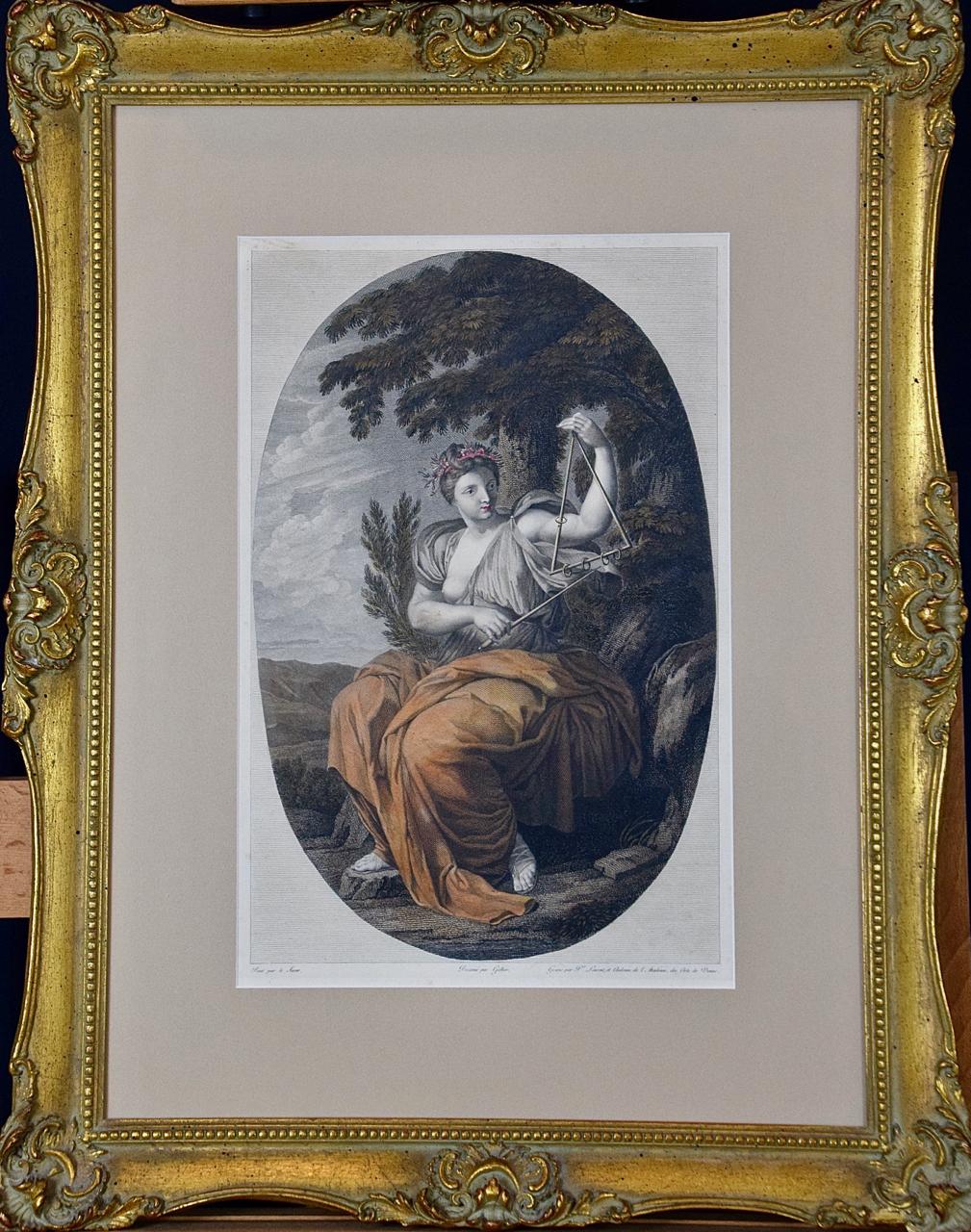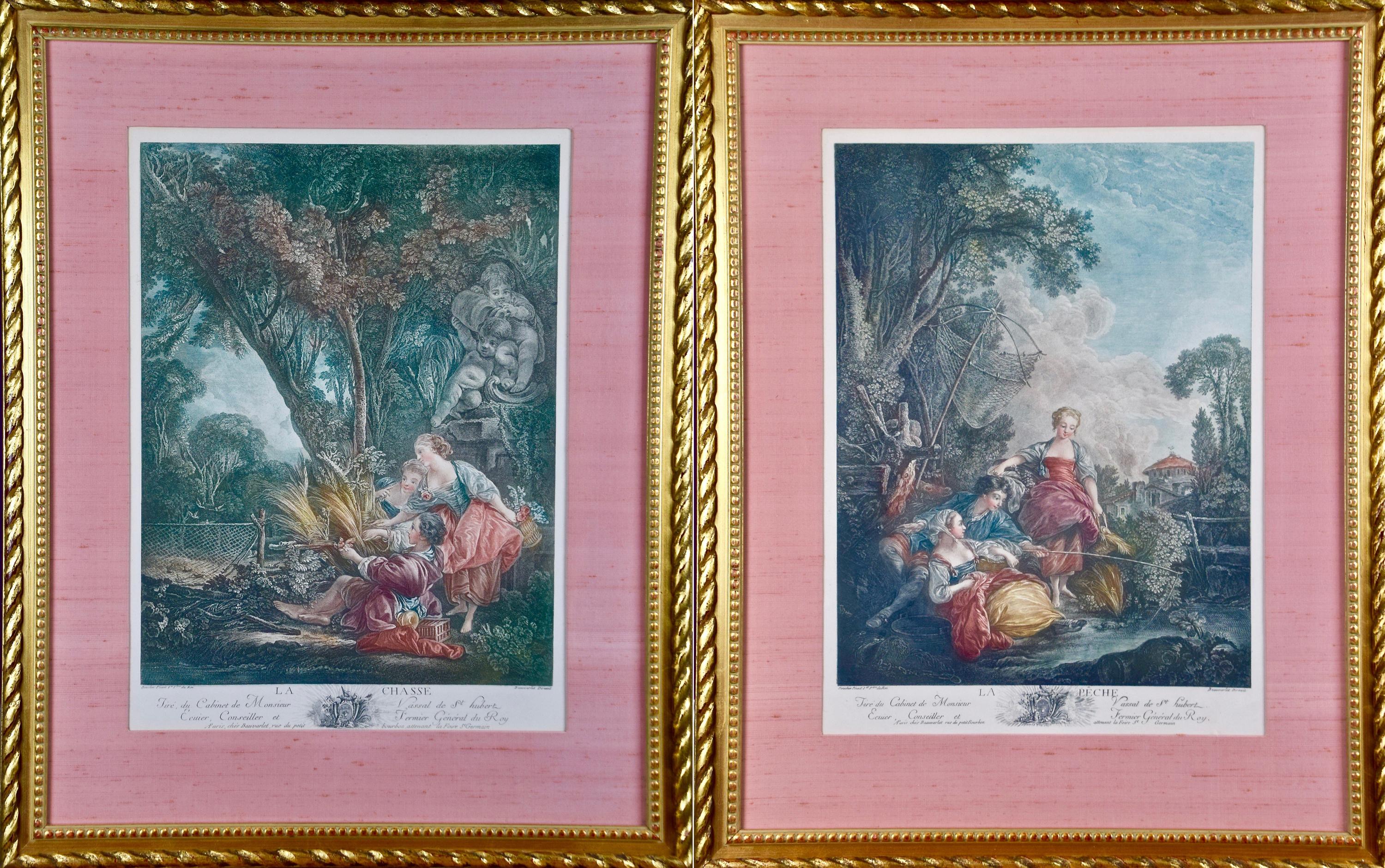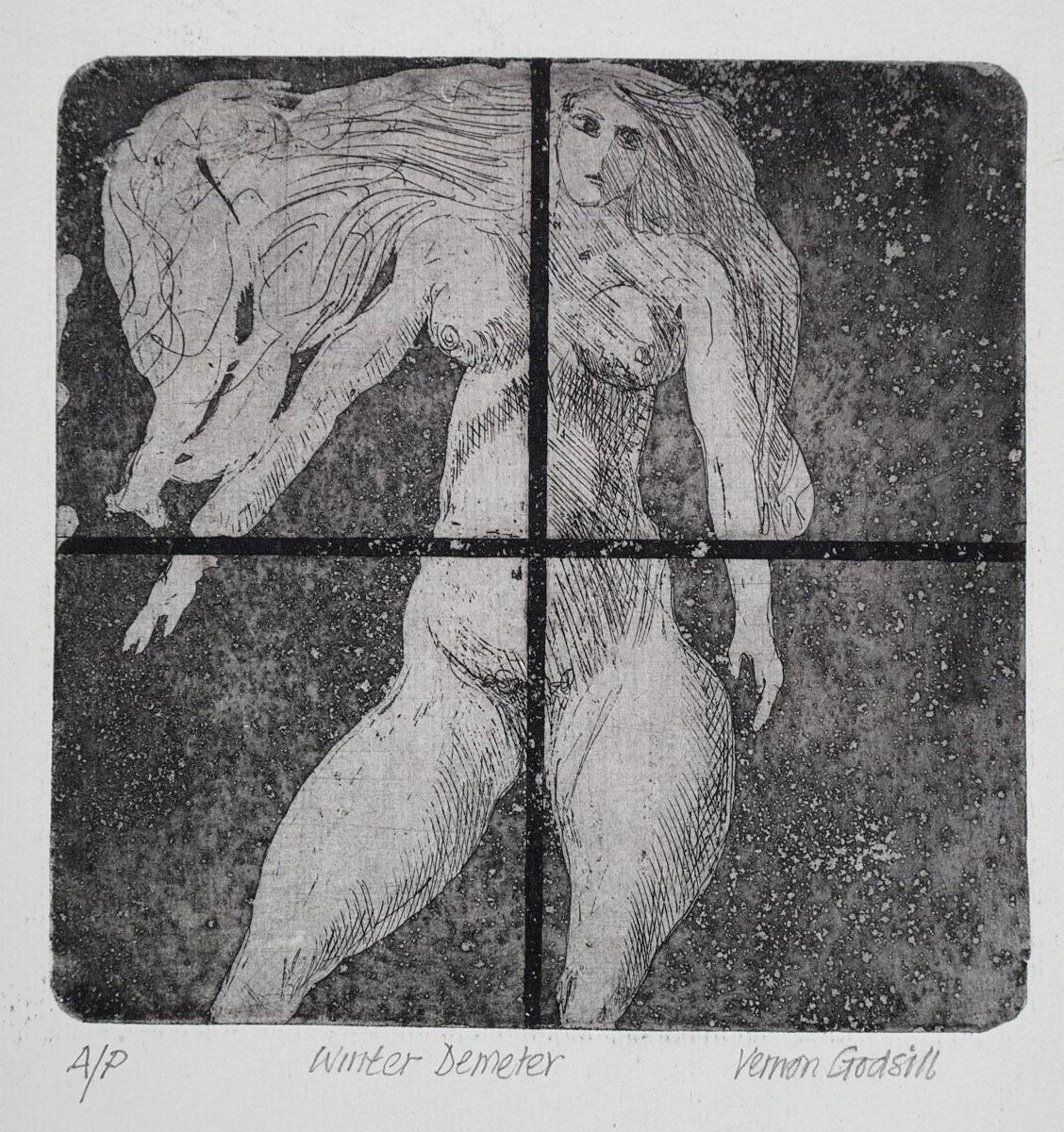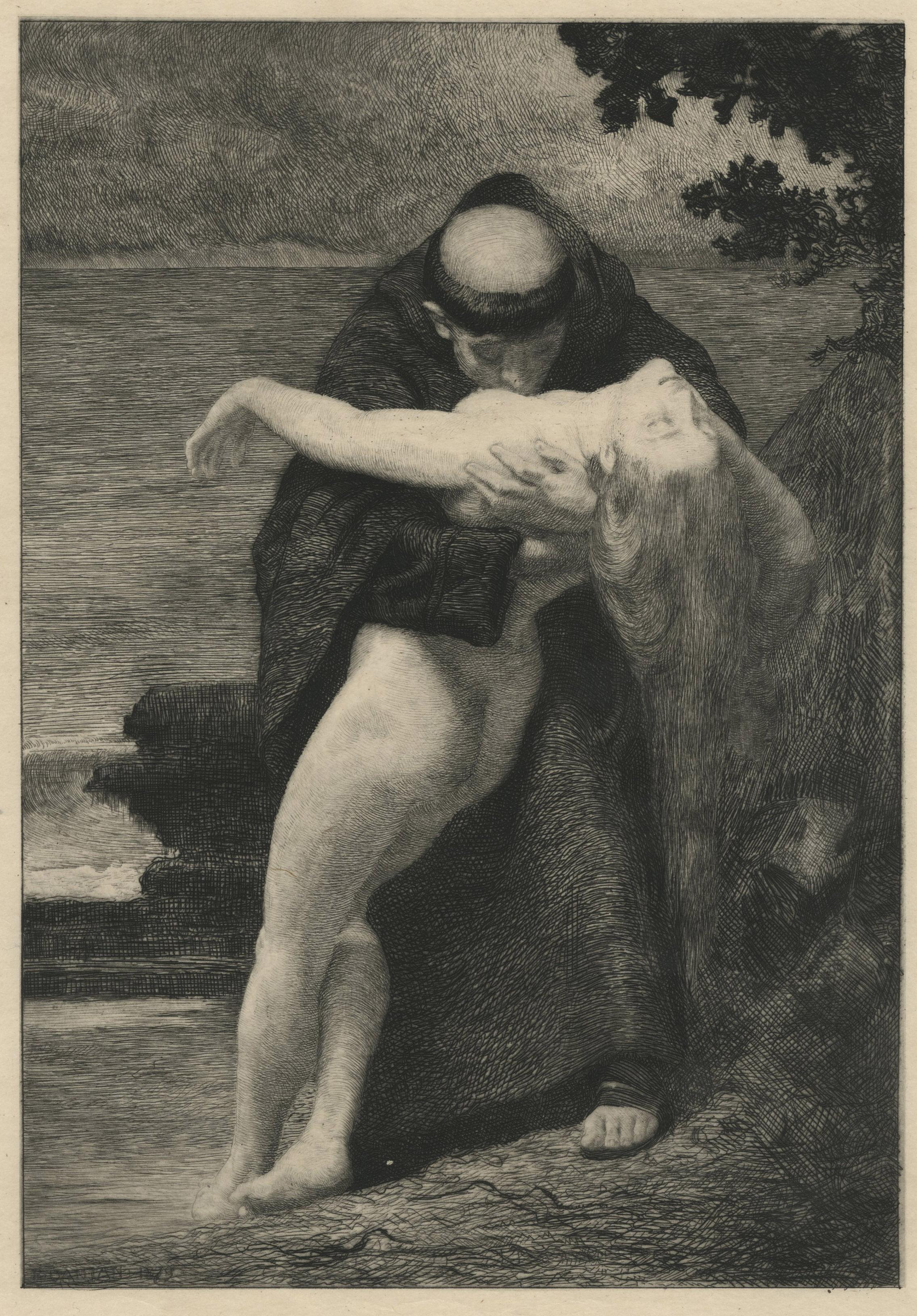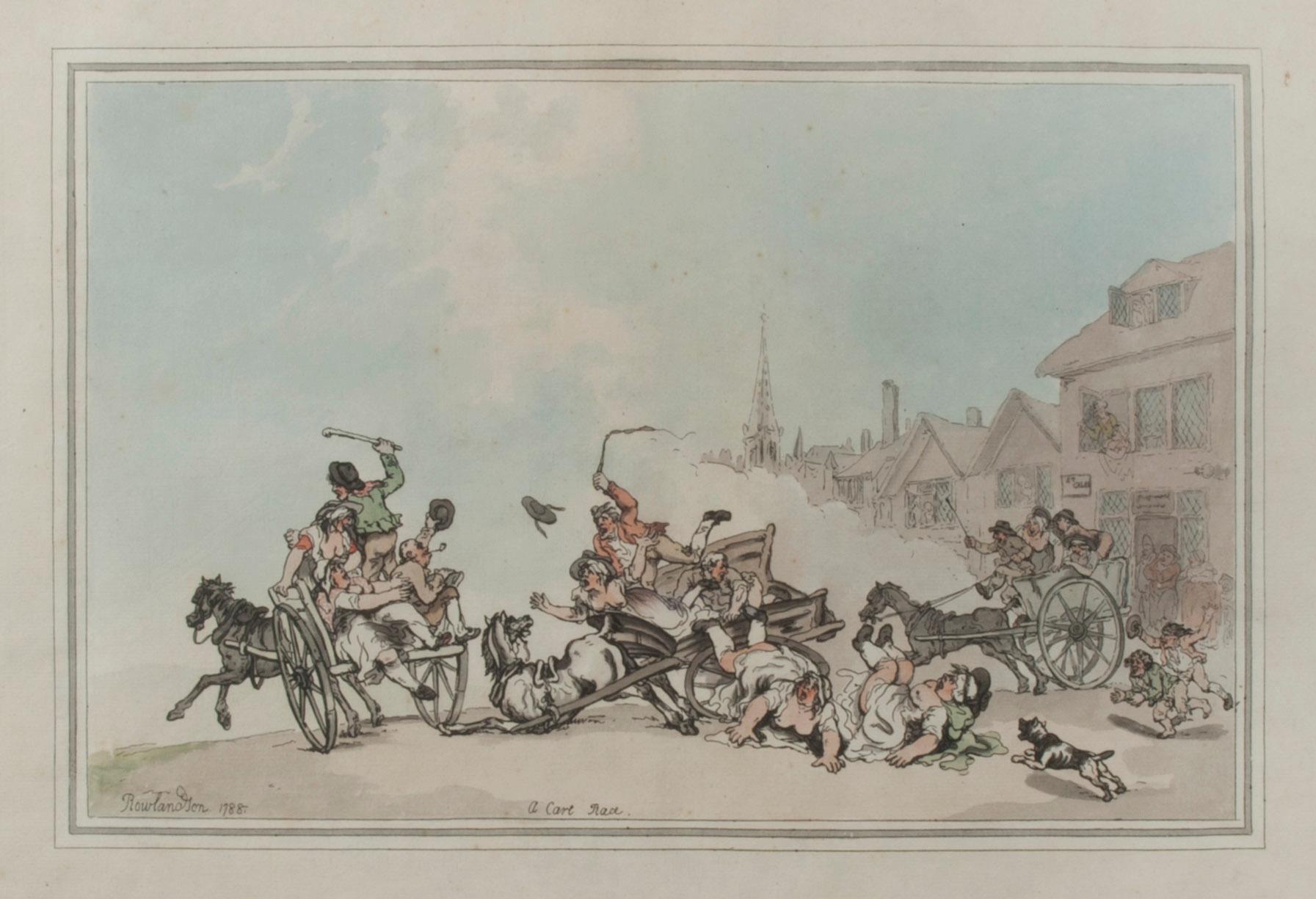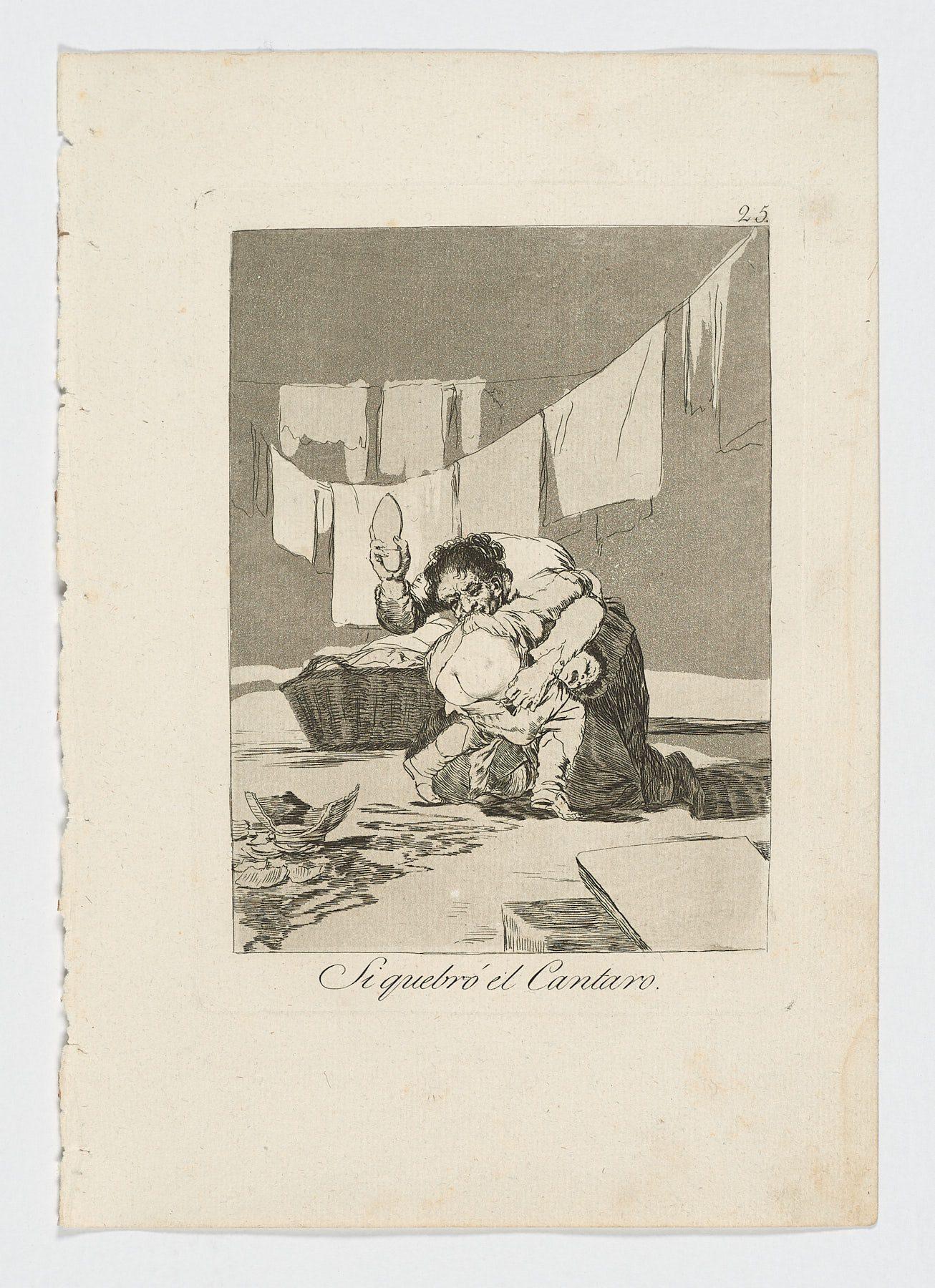Items Similar to Shakespeare's Midsummer-Night's Dream- Etching-J.P. Simon After J.H. Fussli-1796
Want more images or videos?
Request additional images or videos from the seller
1 of 7
Johann Heinrich Fussli (After)Shakespeare's Midsummer-Night's Dream- Etching-J.P. Simon After J.H. Fussli-17961796
1796
About the Item
Midsummer-Night's Dream is an original etching engraved by Jean Pierre Simon after the iconic romantic painting by Heinrich Füssli in 1790.
Titled on plate: Midsummer-Night's Dream, Act IV, Scene I: A wood - Titania, Queen of the fairies, Bottom, fairies attending
Mint conditions with little tears along the margin, and a glued tear in the center. Some light little foxings.
The original oil painting is displayed at Tate Britain in London. It was commissioned for the Boydell Shakespeare Gallery
Image dimensions: 50 x 63.5 cm.
Johann Heinrich Füssli (1741- 1825) was a Swiss artist, a paint-maker, he spent most of his life in Britain. His artworks most dedicated to portraits and landscapes, Fussli was interested in the supernatural and inspired with it, he is well-known for use of light and shadow.
Here this artwork of the Nightmare shows his feature and concern, as dealing with supernatural subject-matter.
- Creator:Johann Heinrich Fussli (After) (1741 - 1825)
- Creation Year:1796
- Dimensions:Height: 21.46 in (54.5 cm)Width: 28.55 in (72.5 cm)Depth: 0.08 in (2 mm)
- Medium:
- Movement & Style:
- Period:1790-1799
- Framing:Framing Options Available
- Condition:Insurance may be requested by customers as additional service, contact us for more information.
- Gallery Location:Roma, IT
- Reference Number:
About the Seller
4.9
Platinum Seller
These expertly vetted sellers are 1stDibs' most experienced sellers and are rated highest by our customers.
1stDibs seller since 2017
6,749 sales on 1stDibs
Typical response time: 2 hours
- ShippingRetrieving quote...Ships From: Grasse, France
- Return PolicyA return for this item may be initiated within 14 days of delivery.
More From This SellerView All
- Peter Schlemihl’s Wundersame G - Rare Book Illustrated by G. Cruikshank - 1827By George CruikshankLocated in Roma, ITPeter Schlemihl’s Wundersame Geschichte is an original modern rare book written by Adelbert von Chamisso (Châlons-en-Champagne,1781 – Berlin, 1838) and illustrated by George Cruikshank (London, 1792 - London, 1878) in 1827. Published by Leonhard Schrag, Nürnberg. Original First Edition. Format: in 12°. The book includes 213 pages with Six full page Etchings and one Frontispiece. Mint conditions. George Cruikshank (London, 1792 - London, 1878) was a British caricaturist and book illustrator, praised as the "modern Hogarth" during his life. His book illustrations for his friend di lui Charles Dickens, and many other authors, reached an international audience. For Charles Dickens, Cruikshank illustrated Sketches by Boz...Category
1820s Romantic More Art
MaterialsPaper, Etching
- La Delivrance De La Princesse Olga - Etching by M.Roux after E. Delacroix - 1911By Eugène DelacroixLocated in Roma, ITImage dimensions: 24 x 28 cm. La Delivrance De La Princesse Olga is an original print in etching technique on ivory-colored paper, realized by M. Roux after Eugène Delacroix . In v...Category
1910s Romantic Figurative Prints
MaterialsLithograph
- Man at the Window - Etching by Robert Carroll - 1976By Robert CarrollLocated in Roma, ITMan at the Window is an Original Etching realized by Robert Carrol in 1976. The artwork is in good condition on a yellowed cardboard. Hand-signed by the artist on the lower right c...Category
1970s Contemporary Figurative Prints
MaterialsEtching
- Death and the Lumberjack - Original Etching by Alphonse Legros - 1876By Alphonse LegrosLocated in Roma, ITDeath and the Lumberjack is an original artwork realized by Alphonse Legros (1837-1911) in 1876. The original work is contained in a cream colored cardboard passepartout (50x35 cm)....Category
1990s Modern Figurative Prints
MaterialsEtching
- The Family - Original Etching by Jean-Louis Demarne - 18th centuryLocated in Roma, ITThe Family is an Original Etching realized by Jean-Louis Demarne (1744-1829). The little artwork is in good condition, included a light green cardboard passpartout (49x31.5 cm). Stamp signed on the lower right corner. Jean-Louis de Marne (1752-24 March 1829) was a French painter. He concentrated on landscape and genre painting, in which he was greatly influenced by such 17th century Dutch masters as Aelbert Cuyp...Category
18th Century Old Masters Figurative Prints
MaterialsEtching
- Garden - Original Etching by Gustave Pierre - Early 20th CenturyLocated in Roma, ITGarden is an Original Etching realized by Gustave Pierre in the Early 20th Century. Signed on the plate. Gustave René Pierre, born in Verdun on March 7, ...Category
Early 20th Century Modern Figurative Prints
MaterialsEtching
You May Also Like
- Muse Terpsichore: Framed Hand-colored 19th C. Engraving after 17th C. PaintingLocated in Alamo, CA"Dessine par Gallier" is a hand-colored engraving and etching by Pierre Laurent (1739-1809) and Pierre Audouin (1768-1822) after a painting by Eustache Le Sueur...Category
Late 18th Century Romantic Figurative Prints
MaterialsEngraving, Etching
- Pair of Hand-colored Romantic French Engravings after Francois BoucherBy (After) Francois BoucherLocated in Alamo, CAA pair of French classical romantic prints original created in the 18th century by Jacques-Firmin Beauvarlet (1731-1797) after paintings by Francois Boucher (1703-1770), utilizing ...Category
18th Century Romantic Figurative Prints
MaterialsEngraving, Etching
- Winter DemeterLocated in Bournemouth, DorsetIn ancient Greek religion and mythology, Demeter is the Olympian goddess of the harvest, presiding over the cycle of life and death.Category
1980s Romantic Figurative Prints
MaterialsEtching
- Phrosine and MélidoreLocated in Fairlawn, OHPhrosine and Mélidore Etching, 1879 Signed in the polate lower left of image This etching is after the Dantan painting, a copy after the Pierre-Paul Prud’hom painting Published by Vve. A. Cadart, 56, Bard. Haussman, Paris A deluxe impression with masked letters The Prud’hom painting is in the Musée des Beaux-AÉdouard Joseph Dantan was born on 26 August 1848 in Paris. His grandfather, who had fought in the Napoleonic Wars, was a wood sculptor. His father, Antoine Laurent Dantan, and uncle, Jean-Pierre Dantan, were both well-known sculptors.[1] Dantan was a pupil of Isidore Pils and Henri Lehmann at the École nationale supérieure des Beaux-Arts in Paris.[2] At the age of nineteen he won a commission for a large mural painting of The Holy Trinity for the Hospice Brezin at Marne (Seine-et-Oise).[3] Dantan's first exhibit at the Paris Salon was An Episode in the Destruction of Pompeii in 1869. In 1870 the Franco-Prussian War interrupted his work, and he enlisted in the defence force.[4] He was given the rank of a sergeant, and was later promoted to lieutenant.[5] During the war the family home was burned down.[4] In the years after the war Dantan exhibited a number of other paintings at the Salon including Hercules at the Feet of Omphale (1874), Death of Tusaphane (1875), The Nymph Salmacis (1876), Priam Demanding of Achillees the Body of Hector (1877), Calling of the Apostles Peter and Andrew (1878), Corner of a Studio (1880) and The Breakfast of the Model (1881).[3] He continued to exhibit at the Salon until 1895. In 1890, 1894 and 1895 he served on the jury of the Salon. For twelve years Dantan's companion was the model Agostina Segatori, who had also posed for artists such as Jean-Baptiste Corot, Jean-Léon Gérôme, Eugène Delacroix and Édouard Manet. She bore a child to Dantan, Jean-Pierre, in 1873. On their separation, Agostina opened Café du Tambourin on the Boulevard de Clichy that became a meeting place for artists.[6][fn 1] Dantan spent his summers in Villerville, where he died on 9 July 1897 when the carriage in which he was riding crashed violently into the village church.[8] Style and reception Coin d'atelier (1880) At the 1870 exposition of the Ecole Nationale des Beaux-Arts Dantan received an honorable mention for his submission for the prix de Rome.[9] In 1874 he won a third class medal for his painting of a monk carving a Christ in wood...Category
1870s Romantic Figurative Prints
MaterialsEtching
- A Cart RaceBy Thomas RowlandsonLocated in Fairlawn, OHA Cart Race Hand colored etching & aquatint, 1788 Signed in the plate (see photo) Published by William Hollande, London Inscribed in the plate with title, artist's name and publication line 'Rowlandson. 1788./ London. Pubd 1789 by Wm Holland No 50. Oxford Street.' Reference: M.Dorothy George, 'Catalogue of Political and Personal Satires in the British Museum', VI, 1938) British Museum Satires 7607 Grego, 'Rowlandson', i. 260, Grego II.392 Provenance: Chris Beetles Ltd., London (label), 2003 Jeffrey M. Kaplan, Washington, D.C. (label) Condition: Excellent Archival framing by Chris Beetles Ltd., London Note: The British Museum has two impressions, one trimmed the other full sheet as this example. Accession Number: 1868,0711.35 The Metropolitan Museum has an impression: Accession number 59.533.314 Fitzwilliam Museum: Accession number: 34.14-286 Cleveland Museum of Art accession number: 1958.10 Image description per BM: Three ramshackle two-wheeled carts drawn by wretched horses race (right to left) against a background formed by the church... Note: The British Museum has two impressions, one trimmed the other full sheet as this example. Accession Number: 1868,0711.35 The Metropolitan Museum has an impression: Accession number 59.533.314 Fitzwilliam Museum: Accession number: 34.14-286 Cleveland Museum of Art accession number: 1958.10 Image description per BM: Three ramshackle two-wheeled carts drawn by wretched horses race (right to left) against a background formed by the clouds of dust which they have raised, with a row of gabled houses (right) inscribed 'St Giles', terminating in a church spire (left), and probably representing Broad St. Giles. The occupants of the carts are Irish costermongers typical of St. Giles. The foremost horse gallops, urged on by the shouts of a standing man brandishing a club. The other occupants, two women and a man, cheer derisively the next cart, whose horse has fallen, one woman falling from it head-first, another lies on the ground. The driver lashes the horse furiously. The third cart, of heavier construction, is starting. The horses are partly obscured by the clouds of dust, but denizens watch from casement windows and a door. Two ragged urchins (right) cheer the race; a dog barks. "It was said that the amount of copper Thomas Rowlandson etched would sheathe the British Navy. An inveterate gambler, for much of his life Rowlandson had to produce a flood of his comic prints to stay ahead of financial losses.A wealthy uncle and aunt raised Rowlandson after his textile-merchant father went bankrupt. His career developed quickly. He entered London's Royal Academy Schools in 1772, visited Paris in 1774, exhibited at the Royal Academy in 1775, and won a silver medal in 1777. He left school in 1778 to set up in business. Rowlandson's depictions of life in Georgian England exposed human foibles and vanity with sympathy and rollicking humor. During the 1780s he consolidated the delicate style he used for his coarse subjects. He worked mainly in ink and watercolor, his rhythmic compositions, flowing line, and relaxed elegance inspired by French Rococo art...Category
1780s Romantic Figurative Prints
MaterialsAquatint
- Francisco De Goya Caprichos Si quebró el Cantaro 1st edition original art printBy Francisco GoyaLocated in Miami, FLFrancisco De Goya (Spain, 1746-1828) ¨Si quebró el Cantaro¨ Series Caprichos. Estampa 25, ca.1797-1799 etching, aquatint, dry point on laid paper 11.6 x 8.1 in. (29.3 x 20.5 cm.) 1st...Category
1790s Romantic Prints and Multiples
MaterialsLaid Paper, Etching, Aquatint
